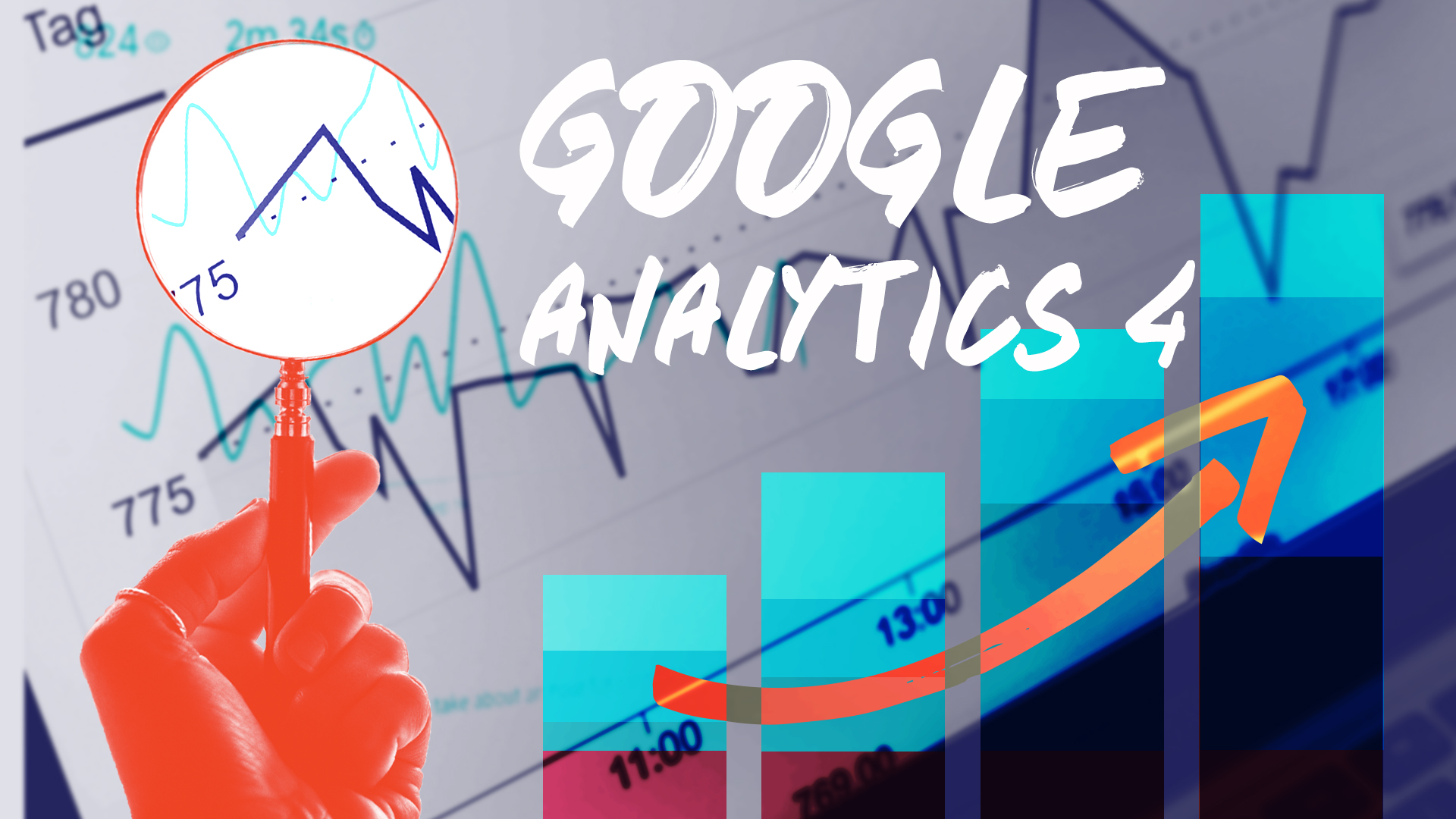How can we help you?
We want to hear from you. And it’s easy to reach us. Give us a shout at 844-886-2252, send us an email at hello@mediumgiant.co, visit our contact page, or fill out the form right here. You can expect a response within two business days.
What are you looking for?
Google Analytics 4: How to smoothly transition to GA4 and gain actionable audience insights
Google Analytics 4 (GA4) is a radical shift in reporting. But making the shift doesn’t have to be scary.
This change is a perfect opportunity to start fresh for your brand.
The GA4 platform update is a new starting point for all marketers to ask the hard questions, dive into their business objectives, and take action on the right data that will deliver return on investment (ROI).
This blog will guide you through a smooth transition to GA4 and enable you to unlock valuable and actionable audience insights.
With GA4’s advanced features and improved tracking capabilities, you’ll gain a deeper understanding of your users, their behaviors, and their journeys across your digital channels.
Overview of GA4
Google stopped processing new data in Google Analytics 3 (Universal Analytics) on July 1, 2023.
Your new website data will be in GA4. But a fresh install is broad and most likely not going to help with your company’s specific marketing objectives without some customization.
The goal of using analytics is to make smarter, data-driven decisions to optimize everything you’re doing online. The opportunity here is to increase your digital business impact, better leverage your digital assets, and, ultimately, improve your bottom line.
3 critical need-to-knows about the GA4 transition
GA4 will have three large impacts to your analytics:
- New data model
- New interface
- No historical data
1) New data model
The setup for GA4 is not turnkey. Yes, you can put a snippet on your site and collect basic data, but it doesn’t provide context — which is key to understanding data and analytics.
In GA3, you set up a custom event, and you could only customize in category, action, and label.
In GA4, with an event such as a video view, you can give that event context. You can give the video name and log the action being taken. You’ll be able to understand more interesting things:
- How long is the video?
- Did they stop the video?
- At what point did they stop?
The new data model also gives you a more complete view of user behaviors across devices and channels. GA4 brings reporting for web and apps together.
2) New Interface
The new tool has a streamlined user interface (UI). It’s a clean, customizable UI, and you can adjust the reporting in GA4 for your business use case.
One of our B2C clients decided to remove the Ecommerce transactions section from their new GA4 instance because they don’t use it. It cleaned up the interface and allowed them to better use the tool.
It’s important to customize reporting to your specific business use case. In addition, there are advanced filter options and machine learning-powered insights.
3) No historical data
Your existing data will not be migrated to GA4. This means you’ll need to export your data from GA3.
This is a positive change for brands. Companies are swimming in a sea of data, and they don’t use it because it’s overwhelming. This effort to export can help you boil down what’s most important to you and make sure that you’re tracking those elements to help you answer important business questions.
How GA4 impacts other areas of your marketing
Content and SEO considerations
GA4 offers greater flexibility to understand how users are engaging with your content across the site.
There are simple metric changes, such as moving from bounce rate to engagement rate. Instead of showing how often a person bounced from the first page they viewed, you can now see how often a user engages with your site. Engagement rate works by tracking time on site, number of pages viewed, and if the visitor completes a conversion event. This gives a more nuanced understanding of your visitors actions on your site.
Video metrics have also been upgraded; you can now see how many people watch a video and for how long. Knowing when people drop off — or that they’re not watching at all — helps you decide if the video needs editing, replacing, or supplemental content.
Not all traffic coming to the site should be considered equal, nor should it be judged by the same type of conversion metrics. GA4 helps you better understand the cohorts of people visiting your site and how best to serve their needs. And that doesn’t always mean a conversion.
Conversion rate optimization considerations
Google’s A/B testing tool, Google Optimize, is being deprecated later this year. Thankfully, Google has announced that the tool will be more compatible with dedicated third-party CRO and A/B testing tools in the future. We don’t know what it’s going to look like, but we imagine it will include great tools to test and optimize your website.
GA4 also makes it easier to play with third-party CRO tools such as VWO and Optimizely. This paired with GA4’s additional context empowers you to make decisions based on user behaviors to improve your digital experiences.
Media and marketing considerations
GA4 is going to touch all sides of your marketing and business, and you need to make sure your new tool is connected with all aspects of your tech stack.
Three key considerations and actions to take:
- Connect Google Ads to your new GA4 property
- Import your new goals and leverage them in your campaigns
- Understand there is a shift in attribution moving from GA3to GA4
Analytics Maturity Model
The analytics maturity model helps you determine where you are in your journey. The goal of analytics is to help you use data to positively influence your decision-making. But not every organization can or should be at level five, prescriptive analytics.
Where you are also comes down to the resources your company has to invest in both the tools and people who help make these decisions. Most mid-size companies will be somewhere between stages two and four. Understanding where you are and having a growth path are the goals.
Example of a GA4 implementation
The GA4 transition is a chance to level up: to look at your website, to ask questions that align with your business objectives, and to create a better analytics system for your business.
Here’s a a fictional example of what it looks like for a company to level up.
Meet Jack Spriggins, owner of The Magic Beanery, a fictional ecommerce company that sells magic beans.

This is a B2C, lead gen-focused business. Jack’s customers are transacting on the website. The journey goes something like this:
- Visitor is interested in the product and visits the site for more information
- Visitor reviews the product options and adds their desired product to the cart
- Visitor purchases the product they best feel matches their needs
- Jack uses Remarketing efforts to drive Visitors back to his site for recurring purchases
This business is in the middle of the analytics maturity model, but Jack wants to become more sophisticated with data usage. He believes better understanding the customer journey will inform website optimizations, leading to more sales.
5 steps to improving analytics
Let’s talk through the five steps we would recommend for Jack and The Magic Beanery — not unlike how we would guide our real-life clients.
1) Identify and answer questions that inform your analytics
It’s important to understand your current conversion rate, your marketing ROI, your campaign performance, and your attribution.
For Jack specifically, questions we might ask:
- Which pages have the highest conversion rate?
- Which campaigns and ads are getting the highest ROI?
- What does your marketing performance look like?
Our GA4 Toolkit has a list of questions to give you a good starting point.
2) Save historical data from GA3
Google Analytics 3 stopped processing data on July 1, 2023. That information is available for a year, so you have until July 1, 2024, to download anything you might need.
But you simply can’t export it all. Google Analytics contains a vast number of data points, so you must be tactical.. And all of the data won’t be useful for the new reporting models in GA4.
Use the answers from the questions in step 1 to help you decide what to export.
Below is an example of first, second, and third exports. It’s broken up because you can’t export everything to answer these questions in one export.
This is why it’s so critical to define what you need. If all the data is useful to you then none of it is useful to you.
Jack has determined that he needs to save the core metrics that impact his business. This will allow him to create benchmarks for his year-over-year reporting.
3) Identify and implement your most valuable events
For Jack, his most important events are conversions:
- Ecommerce purchases
- Newsletter signups
- Product spec sheet downloads
Micro conversions are going to be things such as key page views. Pages that begin a multistep form to enter a conversion funnel. High-value activity such as watching videos, button clicks, social platform clicks, etc.
This info will help your content team determine how to build more content.
You might also want to track off-site clicks. As an example, we have tourism clients who want to know where they are sending traffic. This informs future partnerships and engagement opportunities for them.
Finally, high-count events, such as usage on the header and footer, are also good areas to track.
The below example shows custom parameters for The Magic Beanery fictional business. Based on Jack’s answers to the questions above, we determined these areas to be key indicators to his business objectives.
- Expected URL: All Pages
- Event Name: Footer Click
- Parameters:
- Click Text {{click url with only hostname remaining}}
- Click URL: {{click url}}
- Click Area: footer
- Click Detail: social
- Trigger: Link Click
4) Connect your marketing channels to GA4
Syncing all your marketing channels to GA4 is an easy yet critical step. Start with Google sources:
- Google Ads
- Google Search Console
- Google Business Profile
Content marketers love Search Console and Business Profile because it shows what search phrases brought people to their websites so marketers can build more content around those topics.
Ensure UTM tagging is up to date. Source, medium, and campaign signals are extremely important to have in the tagging for all your campaigns. Without it, you’ll be in the dark with your referral traffic.
5) Optimize your marketing through testing and analysis
The last step is to take action. A good framework to help marketers think about this is test > analyze > optimize:
- Test to identify areas of improvement.
- Analyze the performance of marketing channels, campaigns, and ads through the lens of multiple attribution models.
- Optimize over time to improve conversion rates.
You want to optimize your website over and over using CRO to improve the conversion rates however you define them. Make sure you have that feedback loop so you can identify low-hanging fruit to optimize and grow.
Get your GA4 set up right.
Transitioning to Google Analytics 4 is a crucial step for harnessing the power of data-driven insights.
With its enhanced tracking capabilities and advanced features, GA4 empowers you to understand your audience on a whole new level. By seamlessly migrating to GA4 and leveraging its actionable insights, you can optimize your marketing strategies, enhance user experiences, and drive meaningful business growth.
Use this as an opportunity to stay ahead of the competition and make informed decisions based on comprehensive analytics. Contact us to embrace GA4 today.
Google Analytics 4: How to smoothly transition to GA4 and gain actionable audience insights
Google Analytics 4 (GA4) is a radical shift in reporting. But making the shift doesn’t have to be scary.
This change is a perfect opportunity to start fresh for your brand.
The GA4 platform update is a new starting point for all marketers to ask the hard questions, dive into their business objectives, and take action on the right data that will deliver return on investment (ROI).
This blog will guide you through a smooth transition to GA4 and enable you to unlock valuable and actionable audience insights.
With GA4’s advanced features and improved tracking capabilities, you’ll gain a deeper understanding of your users, their behaviors, and their journeys across your digital channels.
Overview of GA4
Google stopped processing new data in Google Analytics 3 (Universal Analytics) on July 1, 2023.
Your new website data will be in GA4. But a fresh install is broad and most likely not going to help with your company’s specific marketing objectives without some customization.
The goal of using analytics is to make smarter, data-driven decisions to optimize everything you’re doing online. The opportunity here is to increase your digital business impact, better leverage your digital assets, and, ultimately, improve your bottom line.
3 critical need-to-knows about the GA4 transition
GA4 will have three large impacts to your analytics:
- New data model
- New interface
- No historical data
1) New data model
The setup for GA4 is not turnkey. Yes, you can put a snippet on your site and collect basic data, but it doesn’t provide context — which is key to understanding data and analytics.
In GA3, you set up a custom event, and you could only customize in category, action, and label.
In GA4, with an event such as a video view, you can give that event context. You can give the video name and log the action being taken. You’ll be able to understand more interesting things:
- How long is the video?
- Did they stop the video?
- At what point did they stop?
The new data model also gives you a more complete view of user behaviors across devices and channels. GA4 brings reporting for web and apps together.
2) New Interface
The new tool has a streamlined user interface (UI). It’s a clean, customizable UI, and you can adjust the reporting in GA4 for your business use case.
One of our B2C clients decided to remove the Ecommerce transactions section from their new GA4 instance because they don’t use it. It cleaned up the interface and allowed them to better use the tool.
It’s important to customize reporting to your specific business use case. In addition, there are advanced filter options and machine learning-powered insights.
3) No historical data
Your existing data will not be migrated to GA4. This means you’ll need to export your data from GA3.
This is a positive change for brands. Companies are swimming in a sea of data, and they don’t use it because it’s overwhelming. This effort to export can help you boil down what’s most important to you and make sure that you’re tracking those elements to help you answer important business questions.
How GA4 impacts other areas of your marketing
Content and SEO considerations
GA4 offers greater flexibility to understand how users are engaging with your content across the site.
There are simple metric changes, such as moving from bounce rate to engagement rate. Instead of showing how often a person bounced from the first page they viewed, you can now see how often a user engages with your site. Engagement rate works by tracking time on site, number of pages viewed, and if the visitor completes a conversion event. This gives a more nuanced understanding of your visitors actions on your site.
Video metrics have also been upgraded; you can now see how many people watch a video and for how long. Knowing when people drop off — or that they’re not watching at all — helps you decide if the video needs editing, replacing, or supplemental content.
Not all traffic coming to the site should be considered equal, nor should it be judged by the same type of conversion metrics. GA4 helps you better understand the cohorts of people visiting your site and how best to serve their needs. And that doesn’t always mean a conversion.
Conversion rate optimization considerations
Google’s A/B testing tool, Google Optimize, is being deprecated later this year. Thankfully, Google has announced that the tool will be more compatible with dedicated third-party CRO and A/B testing tools in the future. We don’t know what it’s going to look like, but we imagine it will include great tools to test and optimize your website.
GA4 also makes it easier to play with third-party CRO tools such as VWO and Optimizely. This paired with GA4’s additional context empowers you to make decisions based on user behaviors to improve your digital experiences.
Media and marketing considerations
GA4 is going to touch all sides of your marketing and business, and you need to make sure your new tool is connected with all aspects of your tech stack.
Three key considerations and actions to take:
- Connect Google Ads to your new GA4 property
- Import your new goals and leverage them in your campaigns
- Understand there is a shift in attribution moving from GA3to GA4
Analytics Maturity Model
The analytics maturity model helps you determine where you are in your journey. The goal of analytics is to help you use data to positively influence your decision-making. But not every organization can or should be at level five, prescriptive analytics.
Where you are also comes down to the resources your company has to invest in both the tools and people who help make these decisions. Most mid-size companies will be somewhere between stages two and four. Understanding where you are and having a growth path are the goals.
Example of a GA4 implementation
The GA4 transition is a chance to level up: to look at your website, to ask questions that align with your business objectives, and to create a better analytics system for your business.
Here’s a a fictional example of what it looks like for a company to level up.
Meet Jack Spriggins, owner of The Magic Beanery, a fictional ecommerce company that sells magic beans.

This is a B2C, lead gen-focused business. Jack’s customers are transacting on the website. The journey goes something like this:
- Visitor is interested in the product and visits the site for more information
- Visitor reviews the product options and adds their desired product to the cart
- Visitor purchases the product they best feel matches their needs
- Jack uses Remarketing efforts to drive Visitors back to his site for recurring purchases
This business is in the middle of the analytics maturity model, but Jack wants to become more sophisticated with data usage. He believes better understanding the customer journey will inform website optimizations, leading to more sales.
5 steps to improving analytics
Let’s talk through the five steps we would recommend for Jack and The Magic Beanery — not unlike how we would guide our real-life clients.
1) Identify and answer questions that inform your analytics
It’s important to understand your current conversion rate, your marketing ROI, your campaign performance, and your attribution.
For Jack specifically, questions we might ask:
- Which pages have the highest conversion rate?
- Which campaigns and ads are getting the highest ROI?
- What does your marketing performance look like?
Our GA4 Toolkit has a list of questions to give you a good starting point.
2) Save historical data from GA3
Google Analytics 3 stopped processing data on July 1, 2023. That information is available for a year, so you have until July 1, 2024, to download anything you might need.
But you simply can’t export it all. Google Analytics contains a vast number of data points, so you must be tactical.. And all of the data won’t be useful for the new reporting models in GA4.
Use the answers from the questions in step 1 to help you decide what to export.
Below is an example of first, second, and third exports. It’s broken up because you can’t export everything to answer these questions in one export.
This is why it’s so critical to define what you need. If all the data is useful to you then none of it is useful to you.
Jack has determined that he needs to save the core metrics that impact his business. This will allow him to create benchmarks for his year-over-year reporting.
3) Identify and implement your most valuable events
For Jack, his most important events are conversions:
- Ecommerce purchases
- Newsletter signups
- Product spec sheet downloads
Micro conversions are going to be things such as key page views. Pages that begin a multistep form to enter a conversion funnel. High-value activity such as watching videos, button clicks, social platform clicks, etc.
This info will help your content team determine how to build more content.
You might also want to track off-site clicks. As an example, we have tourism clients who want to know where they are sending traffic. This informs future partnerships and engagement opportunities for them.
Finally, high-count events, such as usage on the header and footer, are also good areas to track.
The below example shows custom parameters for The Magic Beanery fictional business. Based on Jack’s answers to the questions above, we determined these areas to be key indicators to his business objectives.
- Expected URL: All Pages
- Event Name: Footer Click
- Parameters:
- Click Text {{click url with only hostname remaining}}
- Click URL: {{click url}}
- Click Area: footer
- Click Detail: social
- Trigger: Link Click
4) Connect your marketing channels to GA4
Syncing all your marketing channels to GA4 is an easy yet critical step. Start with Google sources:
- Google Ads
- Google Search Console
- Google Business Profile
Content marketers love Search Console and Business Profile because it shows what search phrases brought people to their websites so marketers can build more content around those topics.
Ensure UTM tagging is up to date. Source, medium, and campaign signals are extremely important to have in the tagging for all your campaigns. Without it, you’ll be in the dark with your referral traffic.
5) Optimize your marketing through testing and analysis
The last step is to take action. A good framework to help marketers think about this is test > analyze > optimize:
- Test to identify areas of improvement.
- Analyze the performance of marketing channels, campaigns, and ads through the lens of multiple attribution models.
- Optimize over time to improve conversion rates.
You want to optimize your website over and over using CRO to improve the conversion rates however you define them. Make sure you have that feedback loop so you can identify low-hanging fruit to optimize and grow.
Get your GA4 set up right.
Transitioning to Google Analytics 4 is a crucial step for harnessing the power of data-driven insights.
With its enhanced tracking capabilities and advanced features, GA4 empowers you to understand your audience on a whole new level. By seamlessly migrating to GA4 and leveraging its actionable insights, you can optimize your marketing strategies, enhance user experiences, and drive meaningful business growth.
Use this as an opportunity to stay ahead of the competition and make informed decisions based on comprehensive analytics. Contact us to embrace GA4 today.




